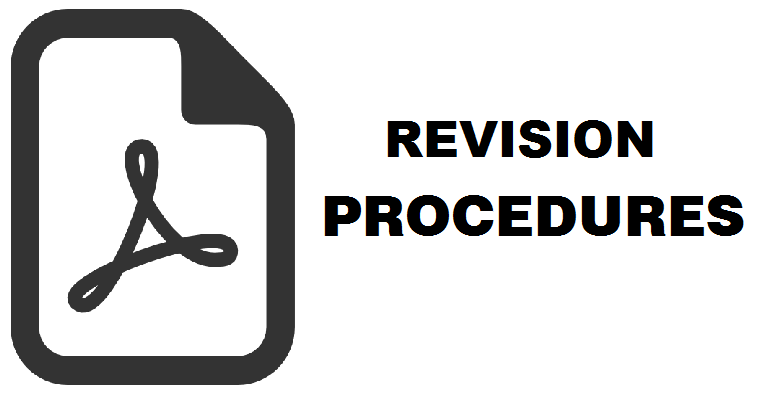Sebaran ostracoda sebagai bioindikator kondisi perairan lepas pantai Balikpapan, Kalimantan Timur
Ponco Agung Wibowo(1), Anis Kurniasih(2*), Tjoek Aziz Suprapto(3), Kresna Tri Dewi(4)
(1) Departemen Teknik Geologi, Universitas Diponegoro, Semarang, Indonesia
(2) Departemen Teknik Geologi, Universitas Diponegoro, Semarang, Indonesia
(3) Departemen Teknik Geologi, Universitas Diponegoro, Semarang, Indonesia
(4) Balai Besar Survei dan Pemetaan Geologi Kelautan, Husen Sastranegara, Kota Bandung, Jawa Barat, Indonesia
(*) Corresponding Author
Abstract
Abstrak Perairan lepas pantai Balikpapan memiliki kerentanan tinggi terhadap perubahan kualitas air yang diakibatkan sedimentasi di sekitar kawasan tersebut. Oleh sebab itu, penelitian mengenai kondisi lingkungan perairan di daerah ini penting dilakukan. Salah satu bioindikator yang dapat digunakan untuk menentukan kualitas perairan adalah ostracoda, yang merupakan mikroorganisme dari jenis Crustacea. Penelitian ini dilakukan di selatan Teluk Balikpapan menggunakan data kemelimpahan ostracoda dalam sedimen Resen pada 25 sampel permukaan dasar laut. Tujuan penelitian ini adalah untuk mengetahui kondisi lingkungan perairan di area penelitian berdasarkan distribusi ostracoda. Hasil penelitian menunjukkan kemelimpahan ostracoda semakin rendah ke arah perairan laut terbuka, dan dari tingkat keanekaragamannya diketahui kondisi perairan tergolong stabil. Hasil analisis cluster membagi area penelitian menjadi dua biotop yakni Biotop1, merupakan lingkungan laut dangkal dengan spesies penciri Cytherella semitalis, Cytherelloidea sp., Phlyctenophora orientalis dan Neomonoceratina indonesiana; Biotop2, berasosiasi dengan lingkungan terumbu karang ditandai dari kehadiran spesies Bairdopillata paraalcyonicola, Paranesidea sp., dan Loxoconcha sp.
Abstract The offshore waters of Balikpapan considered as vulnerable in term of changes in water quality due to high sedimentation. Therefore, research on the condition of the aquatic environment in this area is necessary. One bioindicator that can be used to determine water quality is ostracods, the Crustacean microorganisms that commonly found in the seabed sediments. This research was conducted in southern Balikpapan Bay using ostracod abundance in Recent sediments on 25 seabed surface samples. The aim of this research is to determine the condition of the aquatic environment based on the distribution of ostracods. The results show that the abundance of ostracods is lower towards open sea waters, and from the level of diversity it is known that water conditions are relatively stable. The results of the cluster analysis divided the research area into two biotopes, Biotope1, a shallow marine environment with the diagnostic species Cytherella semitalis, Cytherelloidea sp., Phlyctenophora orientalis and Neomonoceratina indonesiana; Biotope2, associated with coral reef environments, is characterized by the presence of Bairdopillata paraalcyonicola, Paranesidea sp., and Loxoconcha sp.
Keywords
Full Text:
PDFReferences
Armstrong, H. & Brasier, M. (2005). Microfossils (2nd Ed.). United Kingdom: Blackwell Publishing, 221-225.
Athersuch, J., Horne, D.J., & Whittaker, J.E. (1989). Marine and brackish water ostracods (Superfamilies Cypridacea and Cytheracea). Great Britain: The Linnean Society of London and The Estuarine and Brackish-Water Sciences Association, 28-32.
Dewi, K.T. (1993). Ostracoda from the Java Sea, west of Bawean Island, Indonesia. Australia: Master Thesis, The University of Wolongong, 63-77.
Dewi, K.T. (2000). Distribution of ostracoda from South of Tanjung Selatan, South Kalimantan. Marine Geological Institute Bulletin, 15(1), 1-14.
Dewi, K.T. & Kapid, R. (2004). Ostracoda: Objek alternatif untuk studi mikropaleontologi. Bandung: Penerbit ITB, 1-16.
Dewi, K.T., Latuputty, G., Priohandono, Y.A. & Purwanto, C. (2017). Respon mikrofauna (ostracoda) terhadap kondisi lingkungan sekitar Pulau Bangka, Sulawesi Utara. Jurnal Geologi Kelautan, 15, 1-10, https://doi.org/10.32693/jgk.15.1.2017.375.
El-Kahawy, R., El-Shafeiy, M., Helal, S.A., & Aboul-Ela, N. (2020). Taxonomy, distribution, and environmental implications of benthic marine ostracods, along the Red Sea Coast of Egypt. Egyptian Journal of Geology, 64, 433-454, https://doi.org/10.21608/egjg.2020.216324.
Frenzel, P. & Boomer, I. (2005). The use of ostracods from marginal marine, brackish waters as bioindicators of modern and Quaternary environmental change. Journal Palaeogeography, Palaeoclimatology, Palaeoecology, 225, 68-92, https://doi.org/10.1016/j.palaeo.2004.02.051.
Hadi, T.A., Abrar, M., Giyanto, Prayudha, B., Johan, O., Budiyanto, A., Dzumalek, A.R., … Suharsono (2020). The status of Indonesian coral reefs 2019. Jakarta: Research Center for Oceanography-Indonesian Institute of Sciences, 9-25.
Hidayat, A., Dwi, A.A., & Ismunarti, D.H. (2016). Pemetaan batimetri dan sedimen dasar di perairan Teluk Balikpapan, Kalimantan Timur. Jurnal Oseanografi, 5(2), 191-201. http://ejournal-s1.undip.ac.id/index.php/jose.
Hong, Y., Yasuhara, M., Iwatani, H., Harnik, P.G., Chao, A., Cybulski, J.D., Liu, Y., … Wei, C. (2022). Benthic ostracod diversity and biogeography in an urbanized seascape. Marine Micropaleontology, 174 (102067), 1-15. https://doi.org/10.1016/j.marmicro.2021.102067
Natsir, S.M., Firman, A., Riyantini, I., & Nurruhwati, I. (2015). Struktur komunitas foraminifera pada sedimen permukaan dan korelasinya terhadap kondisi lingkungan perairan lepas Pantai Balipapan, Selat Makassar. Jurnal Ilmu dan Teknologi Kelautan Tropis, 7(2), 671-680.
Odum, E.P. (1971). Fundamentals of Ecology (3rd Ed.), Philadelphia, USA: W.B. Sounder Co.
Parameswari, E., Davamani, V., Kalaiarasi, R., Ilakiya, T., & Arulmani, S. (2020). Utilization of ostracods (crustacea) as bioindicator for environmental pollutants. International Research Journal of Pure & Applied Chemistry, 21 (7), 73-93. https://doi.org/10.9734/IRJPAC/2020/v21i730182
Ratnasari, R.N., Helmi, M., dan Rochaddi, B. (2015). Studi sebaran konsentrasi material padatan tersuspensi menggunakan citra satelit Landsat-8 di Perairan Teluk Balikpapan Kalimantan Timur. Jurnal Oseanografi, 4 (4), 741-749, http://ejournal-s1.undip.ac.id/index.php/jose.
Sihombing, D.F.F. (2003). Geologi dan studi ostracoda daerah Petangis, Kecamatan Tanjung Aru, Kabupaten Pasir, Kalimantan Timur. Bandung: Skipsi Departemen Teknik Geologi, Fakultas Kebumian dan Teknologi Mineral ITB.
Article Metrics
Refbacks
- There are currently no refbacks.
Copyright (c) 2024 Anis Kurniasih

This work is licensed under a Creative Commons Attribution-ShareAlike 4.0 International License.
Volume 35 No 2 the Year 2021 for Volume 39 No 1 the Year 2025
ISSN 0215-1790 (print) ISSN 2540-945X (online)








